Vindolanda – An English Roman Settlement
We continue our tour of Medieval Great Britain with Liberation Tours after visiting the castle of Richard III at Middleham. Next we will veer away from Medieval times and turn the clock back a thousand years. I have always been a keen student of all matters relating to the Roman Empire and the unrivalled dramatis personae from Horatius at the bridge in the 6th century B.C. to Julius Caesar, Augustus, Nero, Caligula, Claudius, Hadrian, Trajan, Marcus Aurelius, Constantine, Justinian and countless others. The Pax Romana was a truly remarkable achievement as was the incredible staying power of the Empire which lasted not until the fall of Rome in 410, but rather the fall of Constantinople in 1453, a full millenium later. No matter where you travel in the Mediterranean it is impossible to ignore the major impact that the Romans had on the lands they conquered. But there is one exception to that general rule and it is England which, despite almost 400 years of Roman rule, almost completely flies under the radar when most people think of the Romans. However, much of that ignorance or misperception is being displaced by the continued archaeological works at Vindolanda in northern England, almost right beside Hadrian’s Wall. Here’s why.
Roman Britain
Although the first Roman army to invade Britain came in 54 BC with Julius Caesar at its head they just did a look see and returned to Gaul, but saw enough to convince future Emperors that Britain should be incorporated into the empire at some time. This happened starting in 43 AD when Claudius sent in four legions to start pacifying what eventually was all of England and Wales and part of southern Scotland. The Romans stayed until 410, building over 2,000 miles (3,200 kms.) of roads, establishing London (Londonium) as the major British city, bringing viniculture and other agricultural techniques to the island and generally creating a relatively peaceful existence for both the invaders and the invaded.
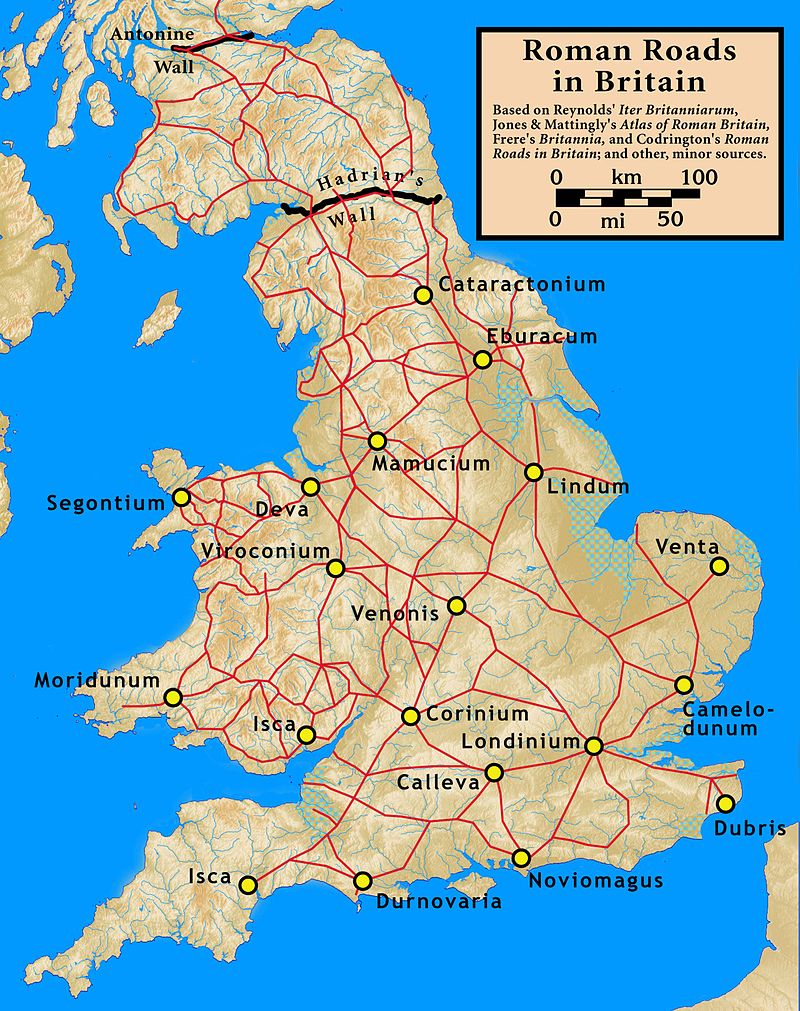
Ironically it is not the roads, many of which still exist today, that most people associate with Roman Britain, but Hadrian’s Wall the remnants of which run 73 miles (118 kms.) from Bowness on Solway Firth on the Irish Sea to Wallsend on the North Sea. The wall and the many surrounding Roman remains is part of the UNESCO World Heritage Site Frontiers of the Roman Empire and is a major tourist draw in Northern England. If you’re really serious about visiting the many sites along the wall you can walk the 84 mile Hadrian’s Wall Path, one of Britain’s famed National Trail system.
Unfortunately, I don’t have the time (or the legs anymore) to make the hike, so I’m in a bus along with a group of other Canadians on a tour sponsored by Liberation Tours titled Medieval Britain: Castles, Crowns and Cannons. The tour includes far more than just medieval sites and this morning we are following the path of the old Roman Military Way or Stanegate Road which you can see on the map above ran just to the south of Hadrian’s Wall. Sections of the wall are still visible and we can see why this is such a popular trail – the landscape is really quite beautiful, rolling green fields interspersed with hardwood copses. Our destination is Vindolanda, one of the major fortified settlements on the south side of the wall.
Vindolanda
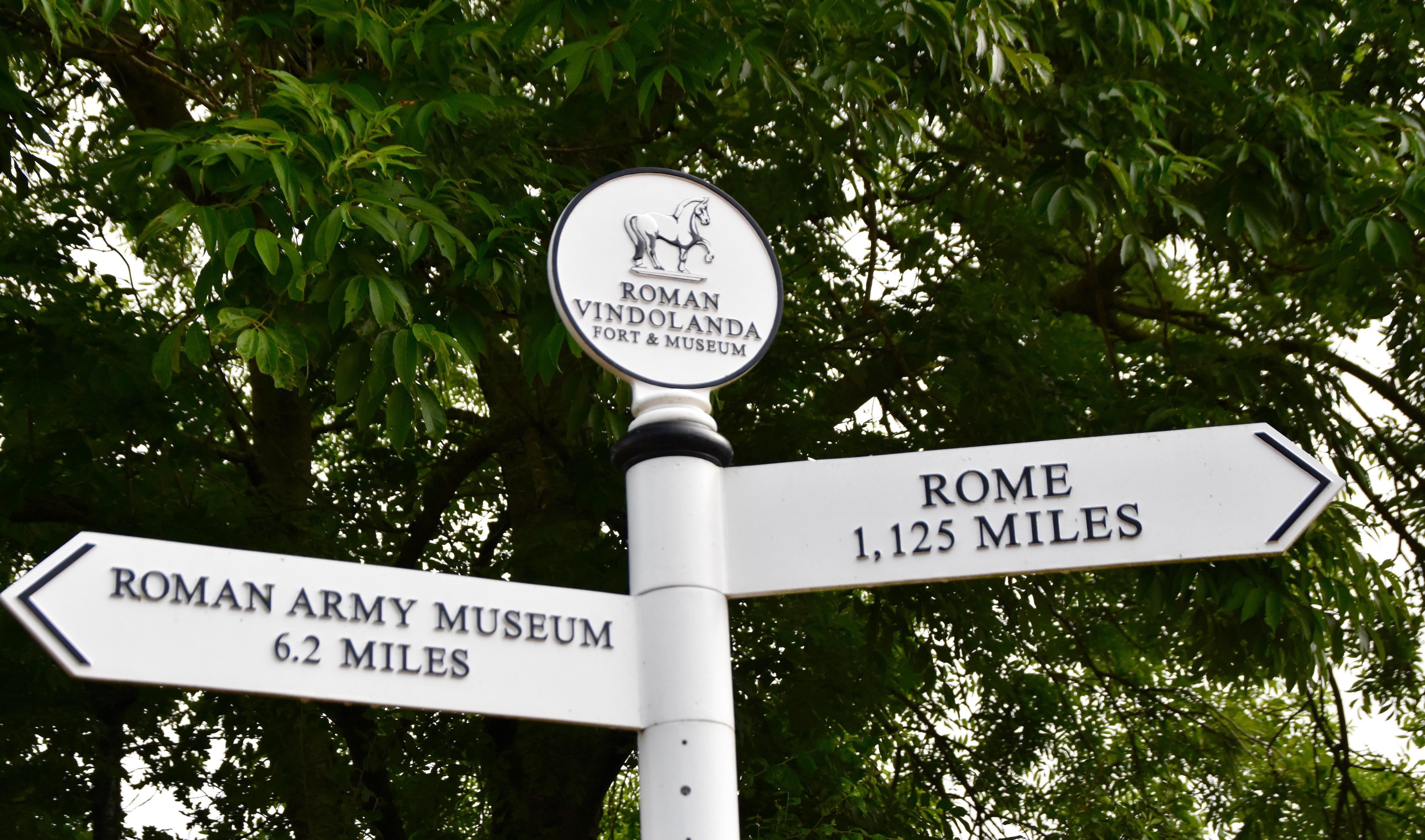
As continued archaeological excavation reveals, Vindolanda has been the site of many different Roman settlements, the earliest dating from well before Hadrian’s Wall and the last from the late 4th century. The purpose of Vindolanda was always primarily as a military stronghold, but as with all settlements of this type, other residents developed a symbiotic relationship with the soldiers, providing taverns, brothels and bath houses.
This is a model of Vindolanda as it would have looked at its greatest extent. The military garrison is on the right with the barracks surrounded by a stone wall while the rest of the town is outside the walls. As you can see, this was a sizeable place, traces of which remained quite visible right up until modern excavation of the site began in the 1930’s. Today it is owned and administered by a non-profit trust which oversees the archaeological work that takes place every summer using mostly volunteer workers.
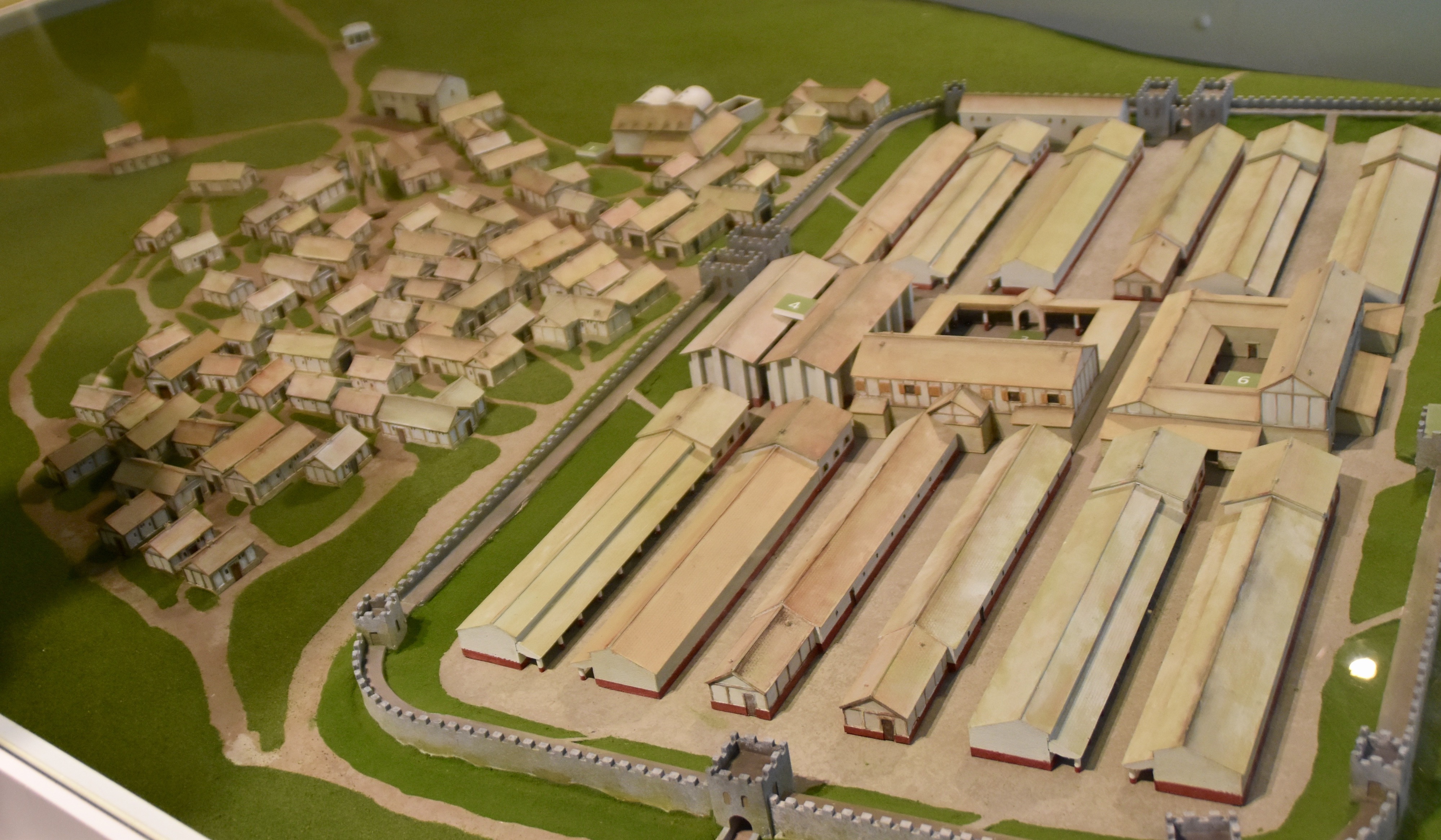
A visit to Vindolanda starts with a walk down to the town to explore the ruins and check out the current excavations, followed by a climb up a recreated keep along Hadrian’s Wall and finally a walk down to the museum which houses many of the thousands of artifacts excavated from the site. So let’s get going starting with this group photo.
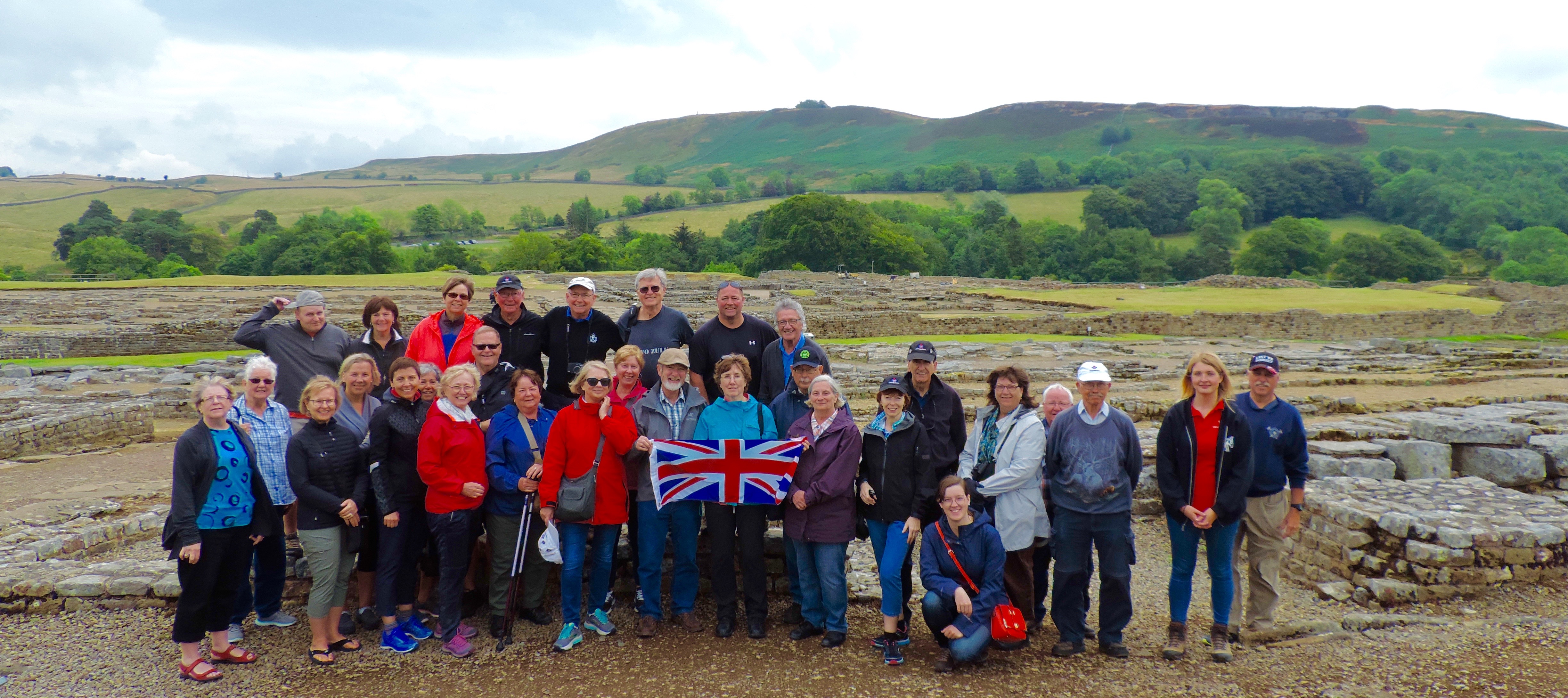
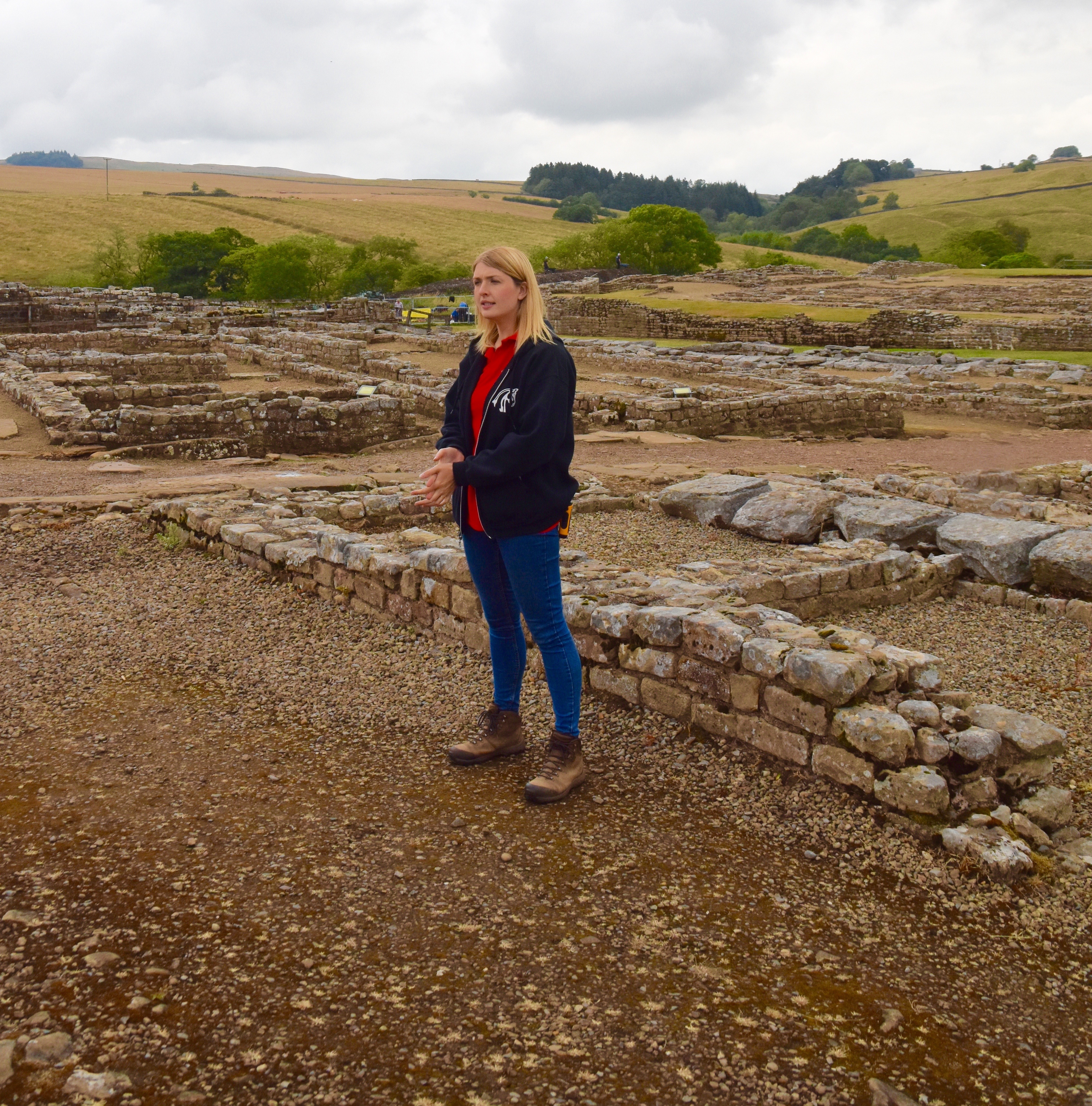
This is our volunteer guide Lauren who briefs us on the history of Vindolanda and takes us on a short tour through the most important sites. She points out the gash in the hill above the site where the Romans quarried the stone for the walls and buildings.
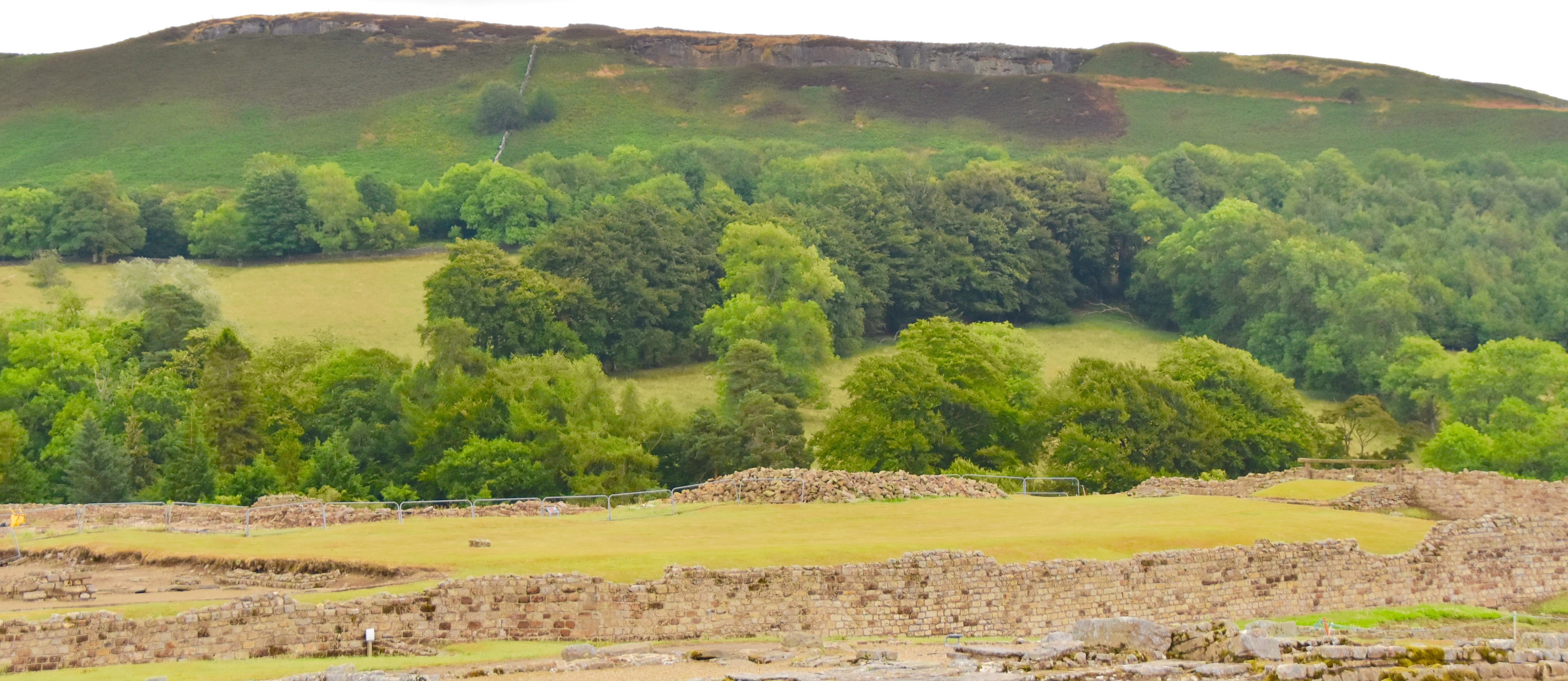
The best view of the entire site is actually from the recreated wall. From here you can get an idea of how major a job it must have been to excavate this entire place.
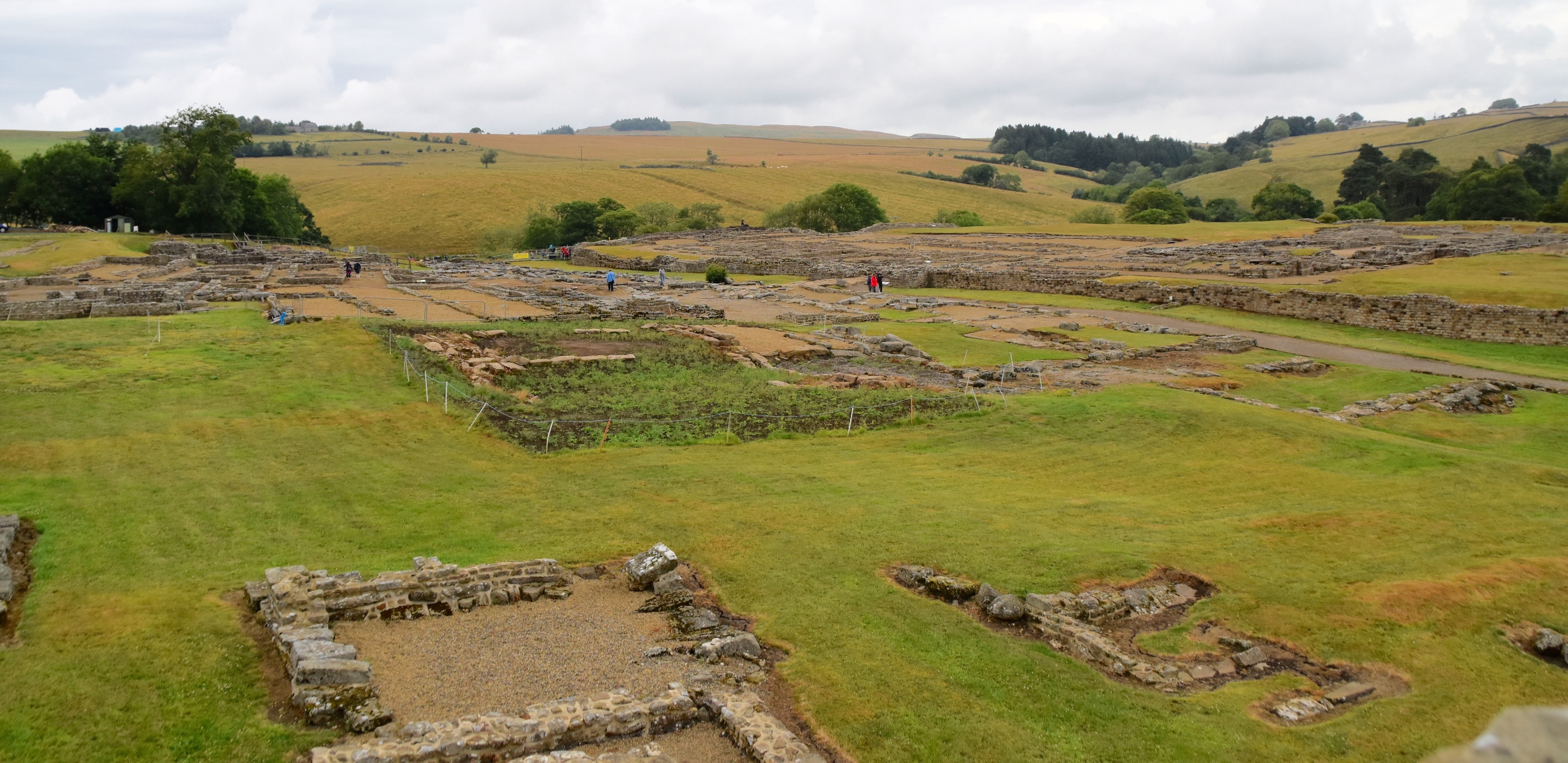
Here is the view from ground level.
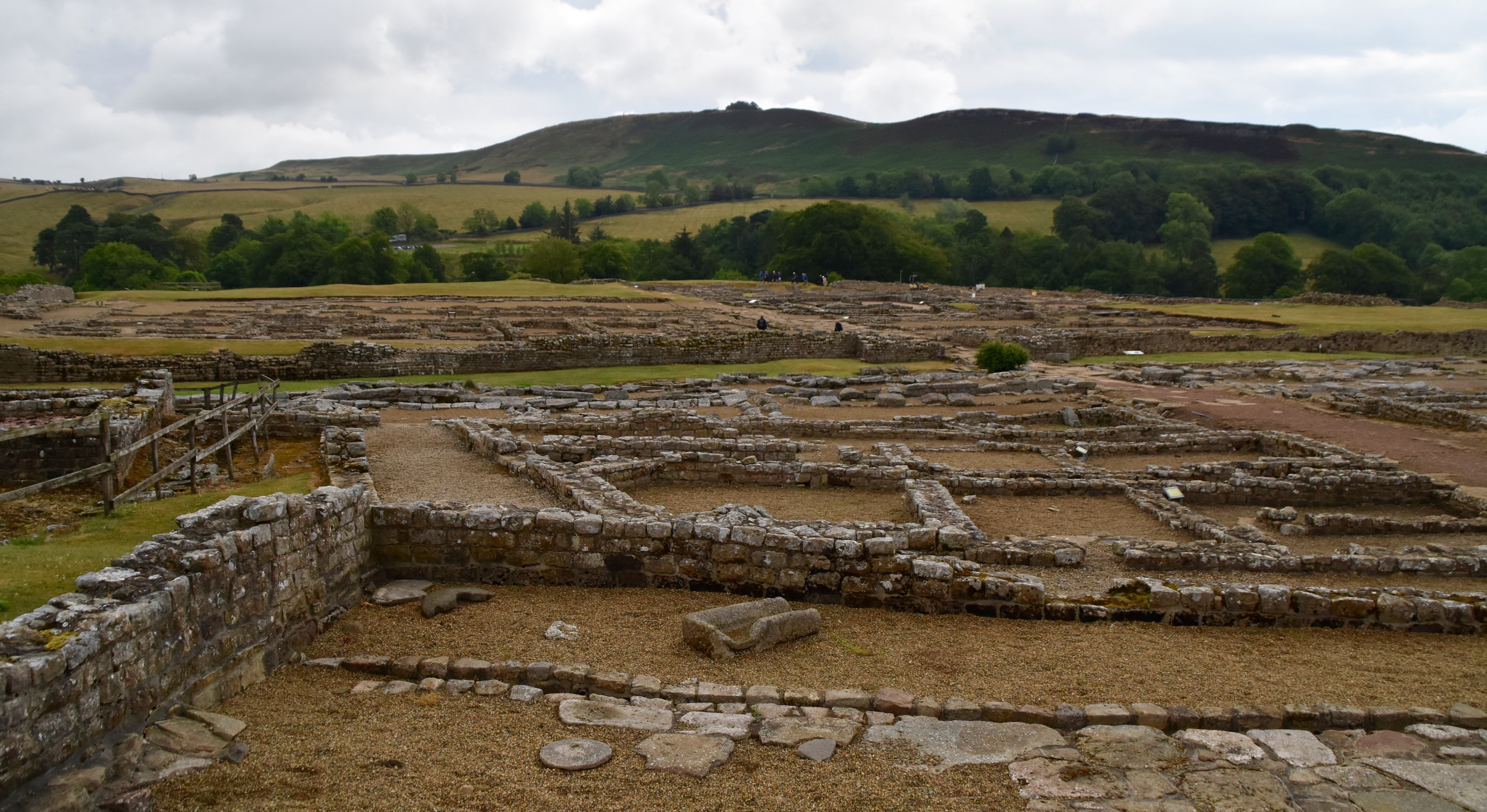
Some of the more important buildings on site include the remains of this bath house. Nowhere near as grand as many Roman bath houses such as the monstrous Baths of Caracalla which you can visit in Rome, but still the idea that the soldiers could relax in a steaming caldarium to take off the chill of an northern English winter is pretty impressive.
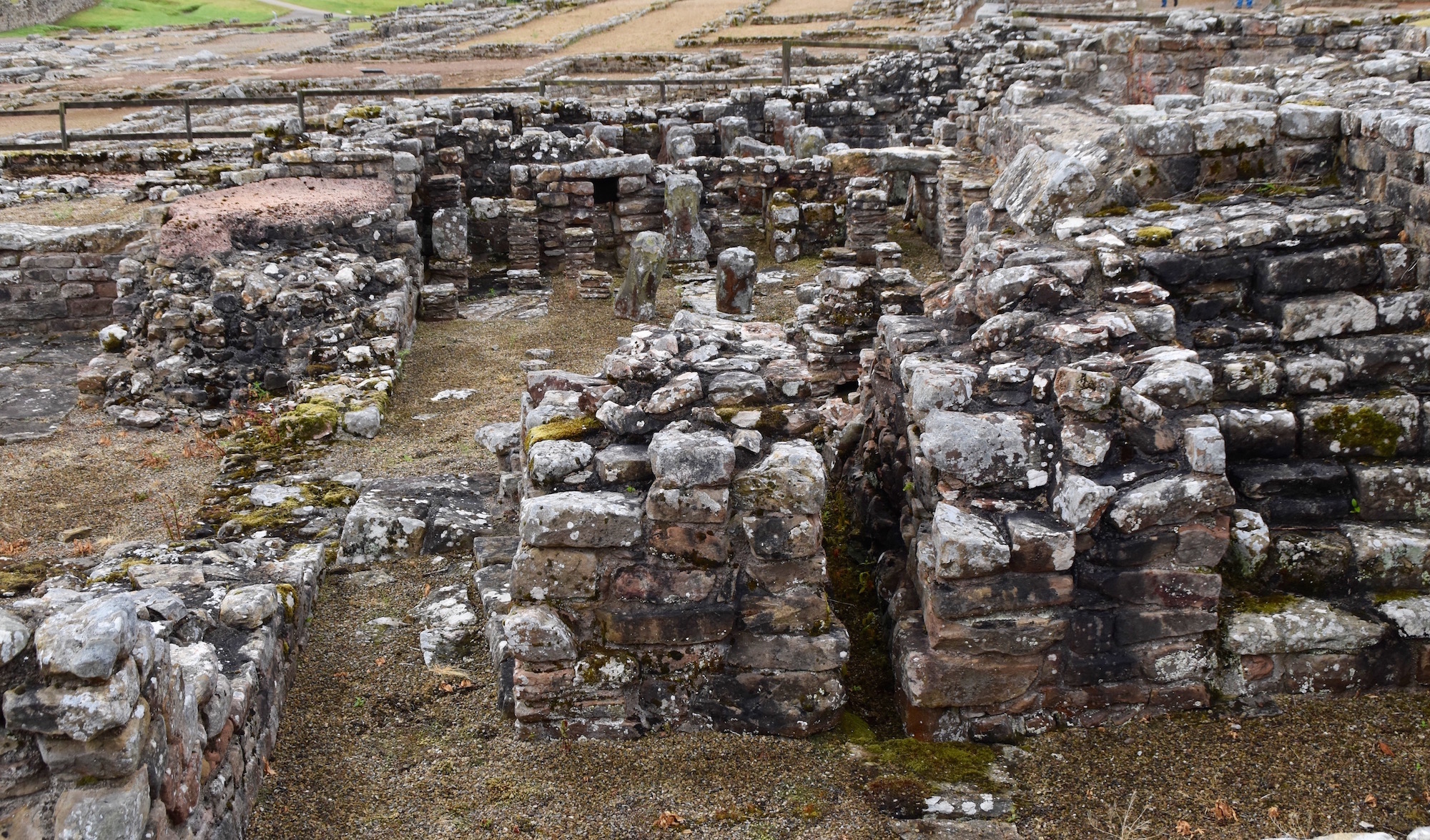
This is the Temple of Jupiter Dolichenus, a truly strange version of Jupiter that originated probably in Turkey and migrated all the way west to the garrisons at Vindolanda. The Romans were notorious for their mystery cults that combined elements of non-Roman religions with traditional Roman gods.
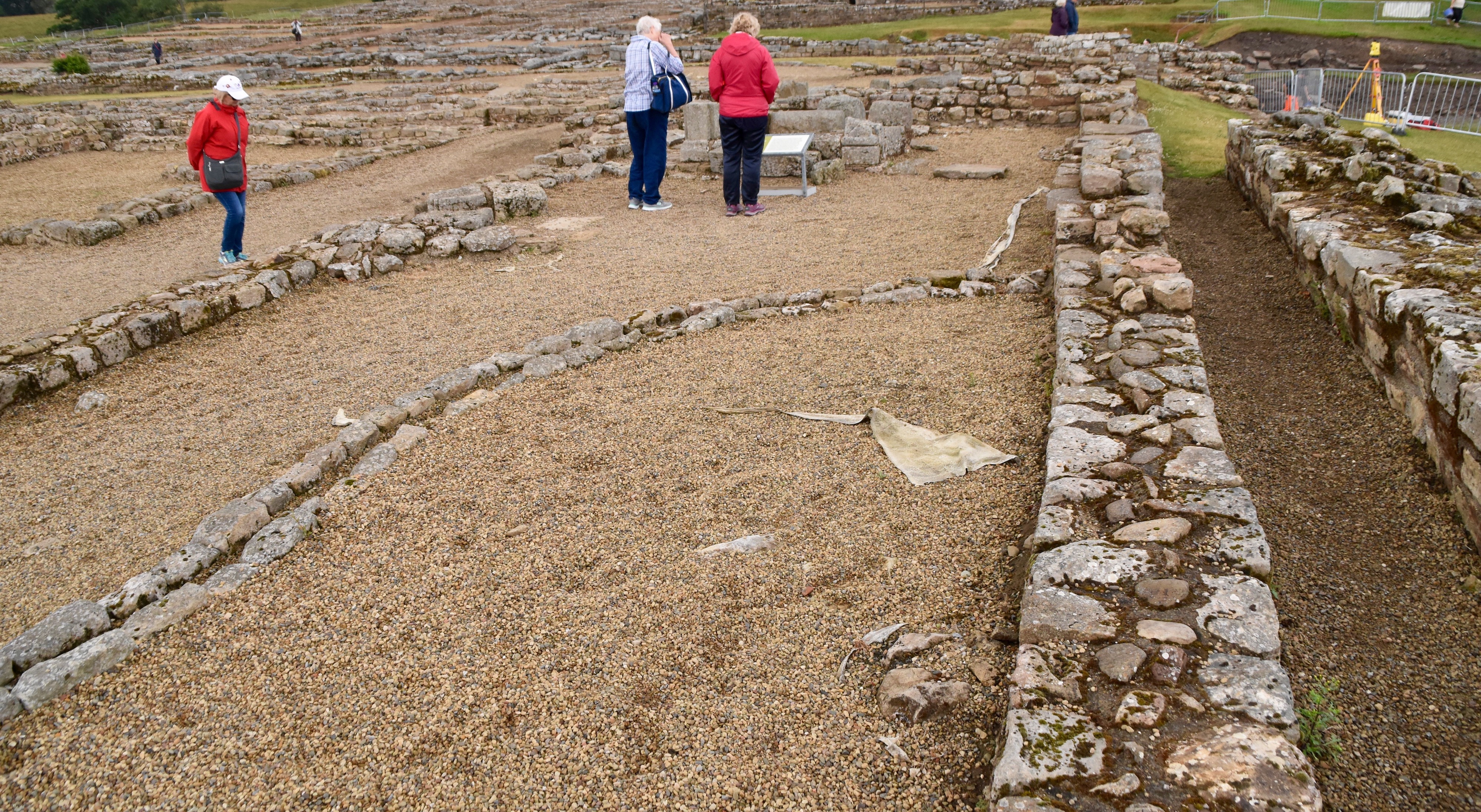
It is really hard to wrap your head around the fact that for hundreds of years people in England were not Christians, but adherents of deities that arose in places as far away as Persia and Egypt. But then when you look at this map at Vindolanda showing Roman trade routes to and from Britain, it becomes more understandable.
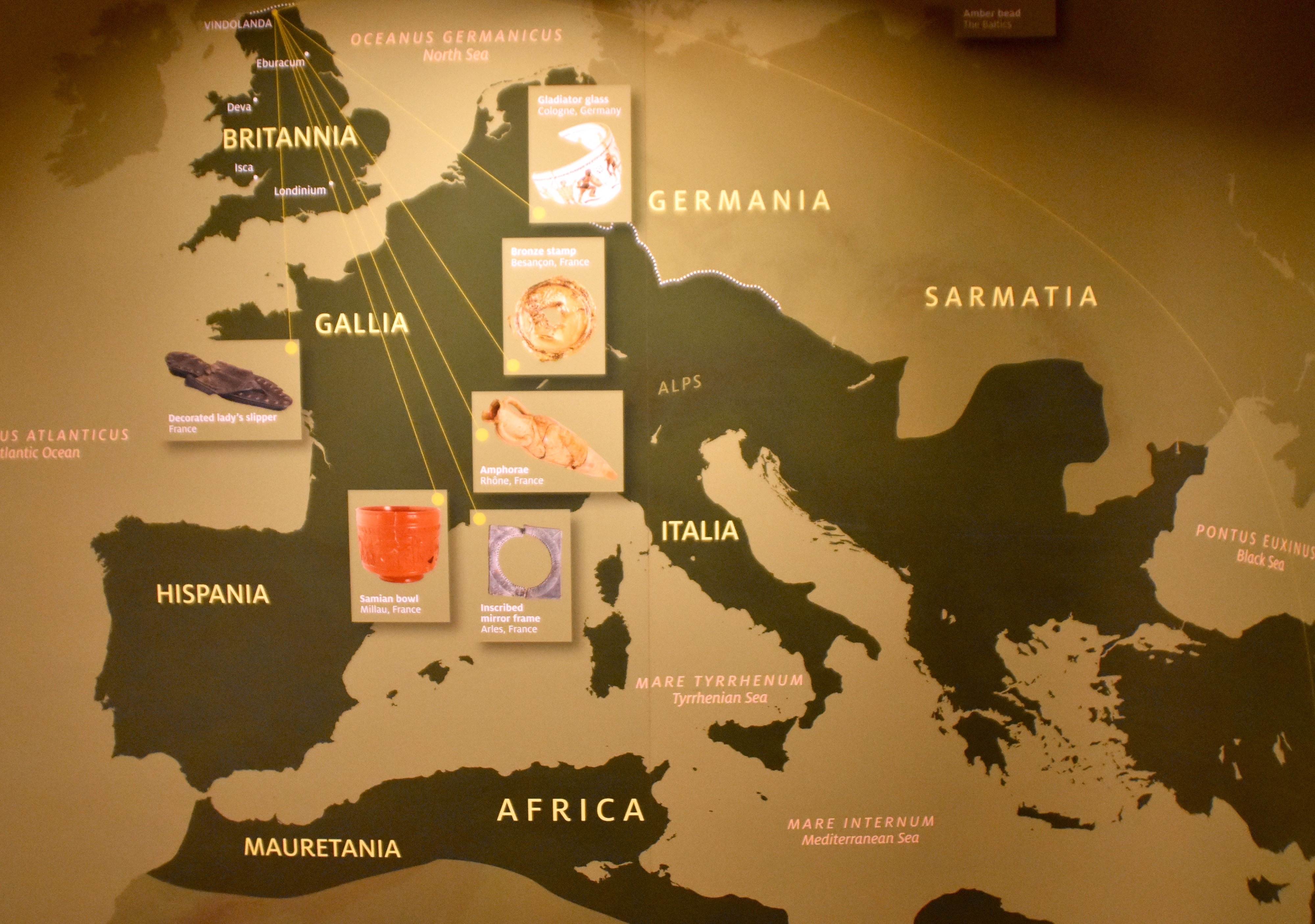
We follow Laurel through the maze of ruins, most of which are barracks, until we get to the portion of the town outside the walls where the current excavations are taking place.
We arrived at Vindolanda even before opening time and the people at the entrance were kind enough to let us in early so we arrived at the excavation site just as the current crew of volunteers was arriving on the scene.
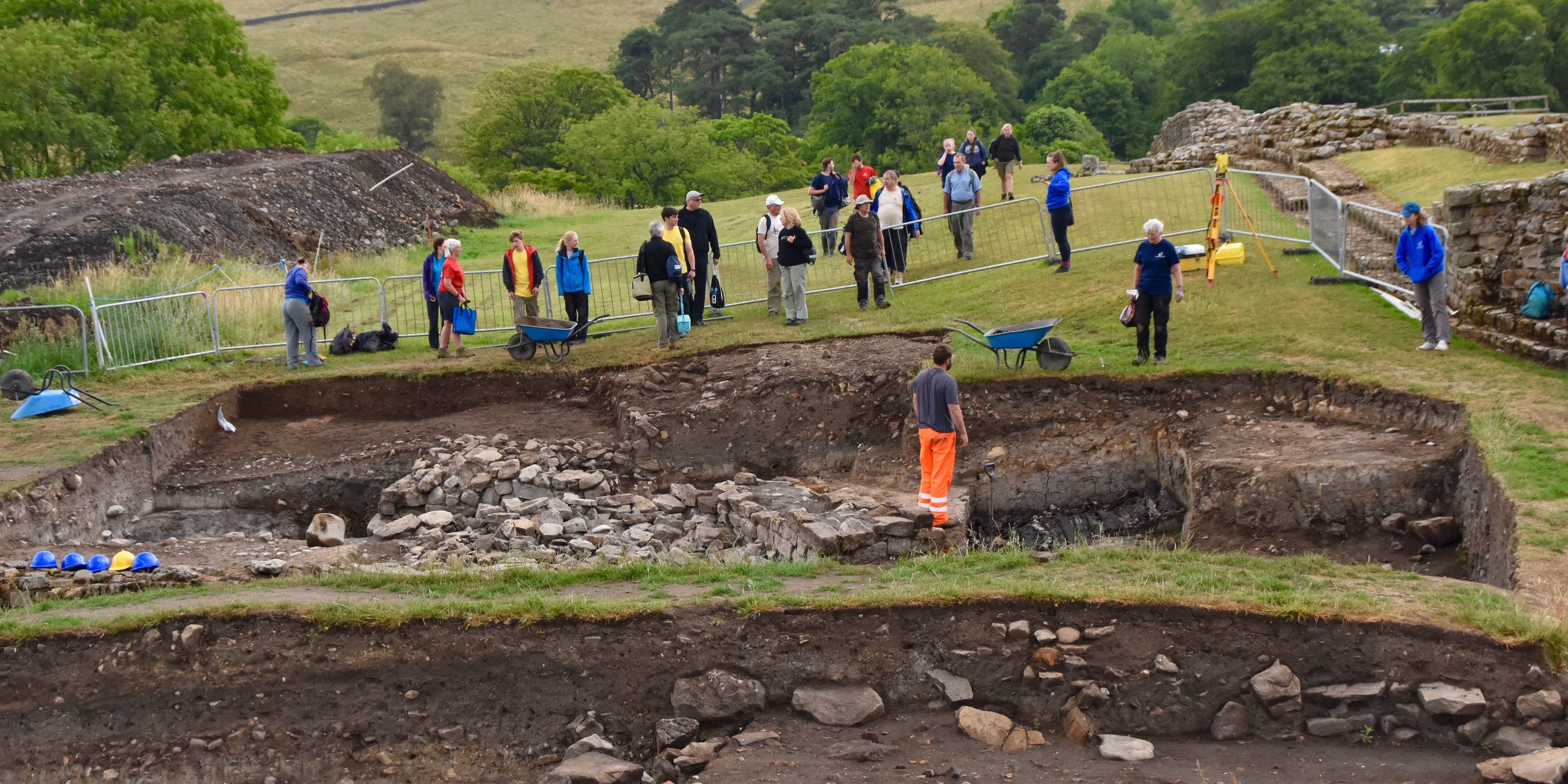
Vindolanda has been accepting would be archaeologists since 1970 in its Volunteer Program and to date over 6,900 people have helped bring Vindolanda to life. Here is a view of the current excavation in progress. It’s pretty basic stuff – a small trowel or shovel and wheelbarrows, lots of them. You can also appreciate that the level these volunteers are working at is well below and thus much older than the Vindolanda we have been exploring with Laurel. What a great way to spend a month of your summer!
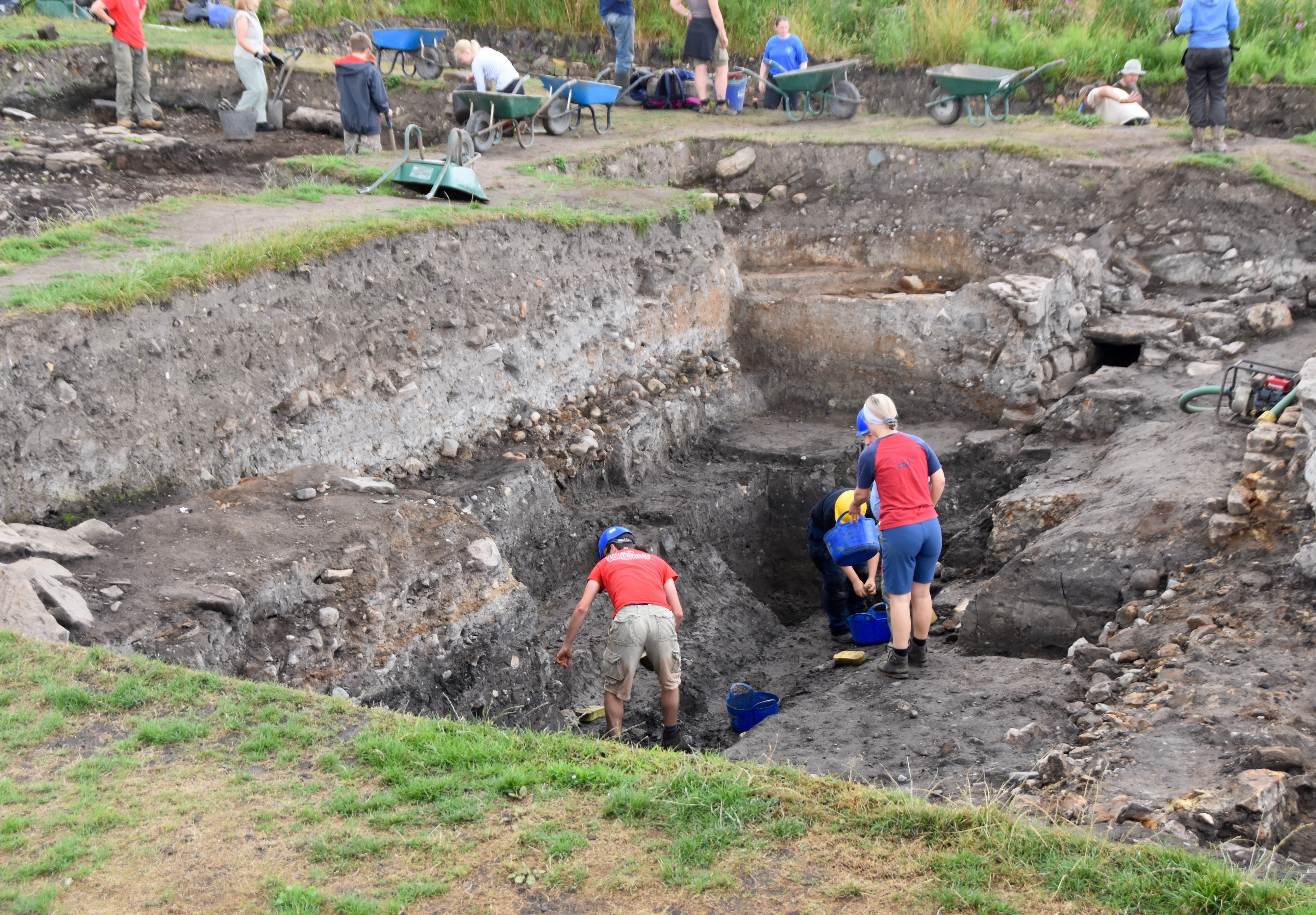
Hadrian’s Wall Recreation
A bit away from what has already been excavated at Vindolanda the trust has recreated a typical section of the wall with one of the eighty Milecastles than once stood, you guessed it, every mile along the wall. It might not be an original part of the wall per se, but it sure was fun to play Roman soldier on.
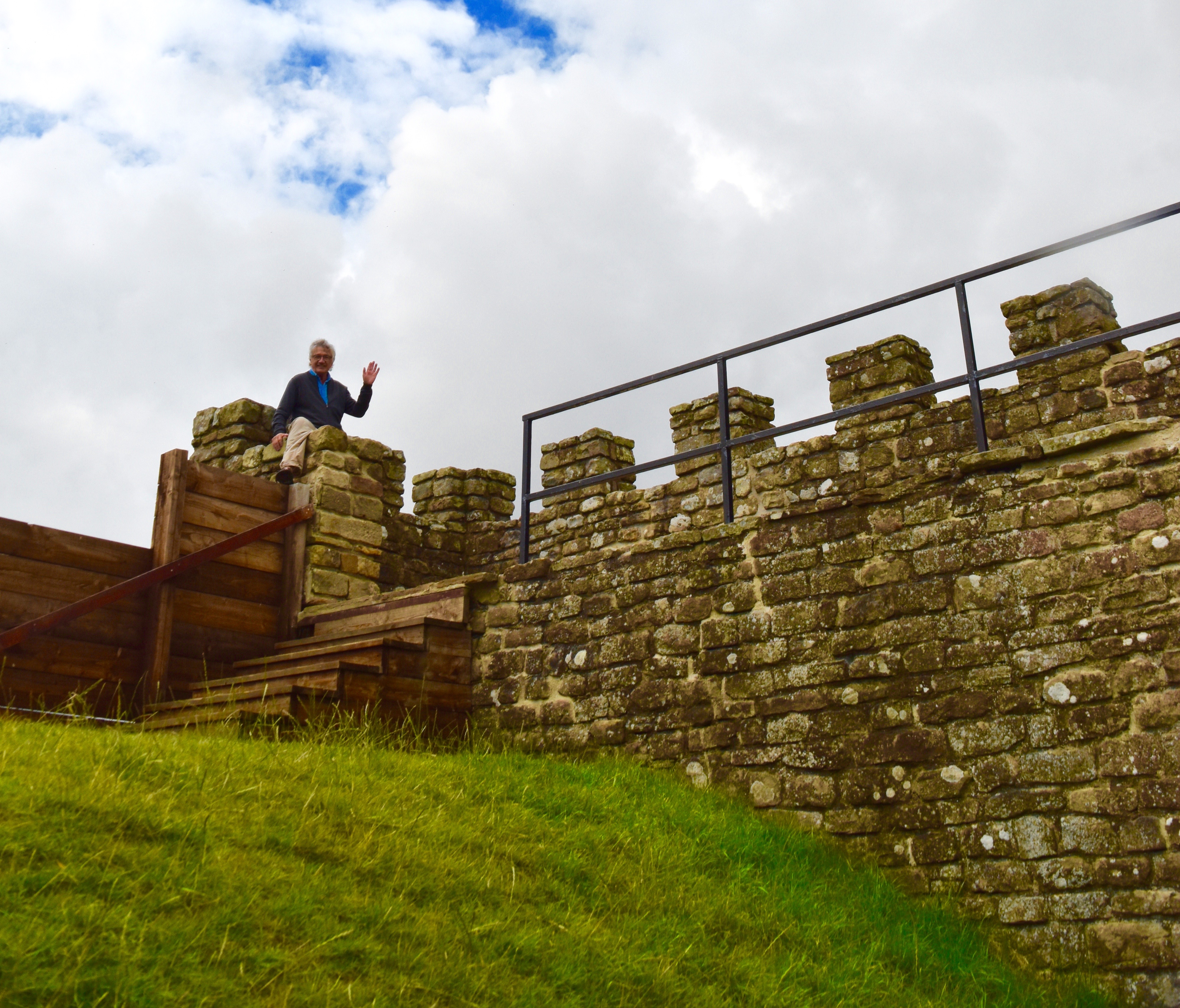
Here are Rob and Janet Purdy, my wife Alison and my sister Anne on the ramparts of the Milecastle in a scene that reminded me of the famous French soldiers taunting King Arthur scene from Monty Python and the Holy Grail.
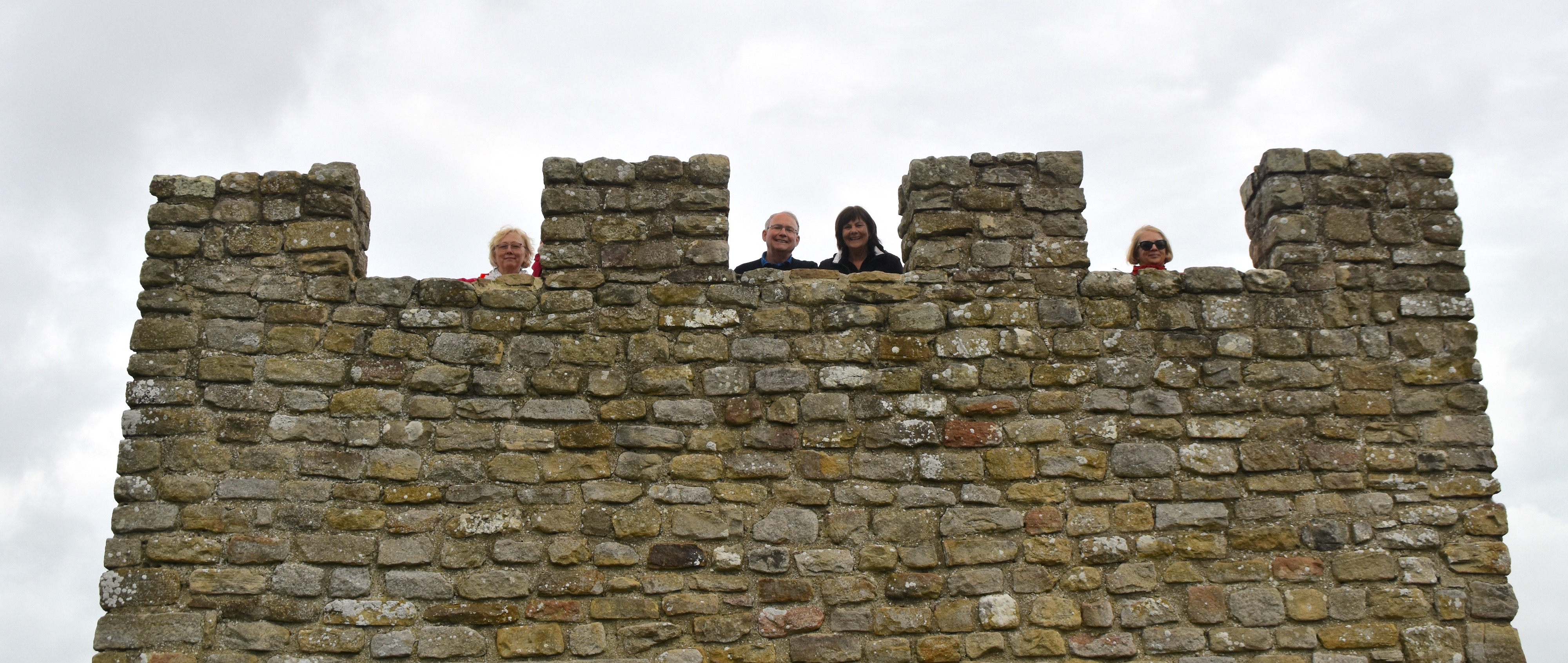
Sure enough, they couldn’t resist blurting out that immortal line – “I fart in your general direction!”.
Vindolanda Museum
From Hadrian’s Wall you make you way down to the Chainley Burn which provided the water supply for the Romans. Crossing over a very pretty old stone arch bridge takes you into the Vindolanda Museum which contains a really unexpected trove of Roman era finds from the area, including the largest collection of leather goods in the entire Roam Empire.
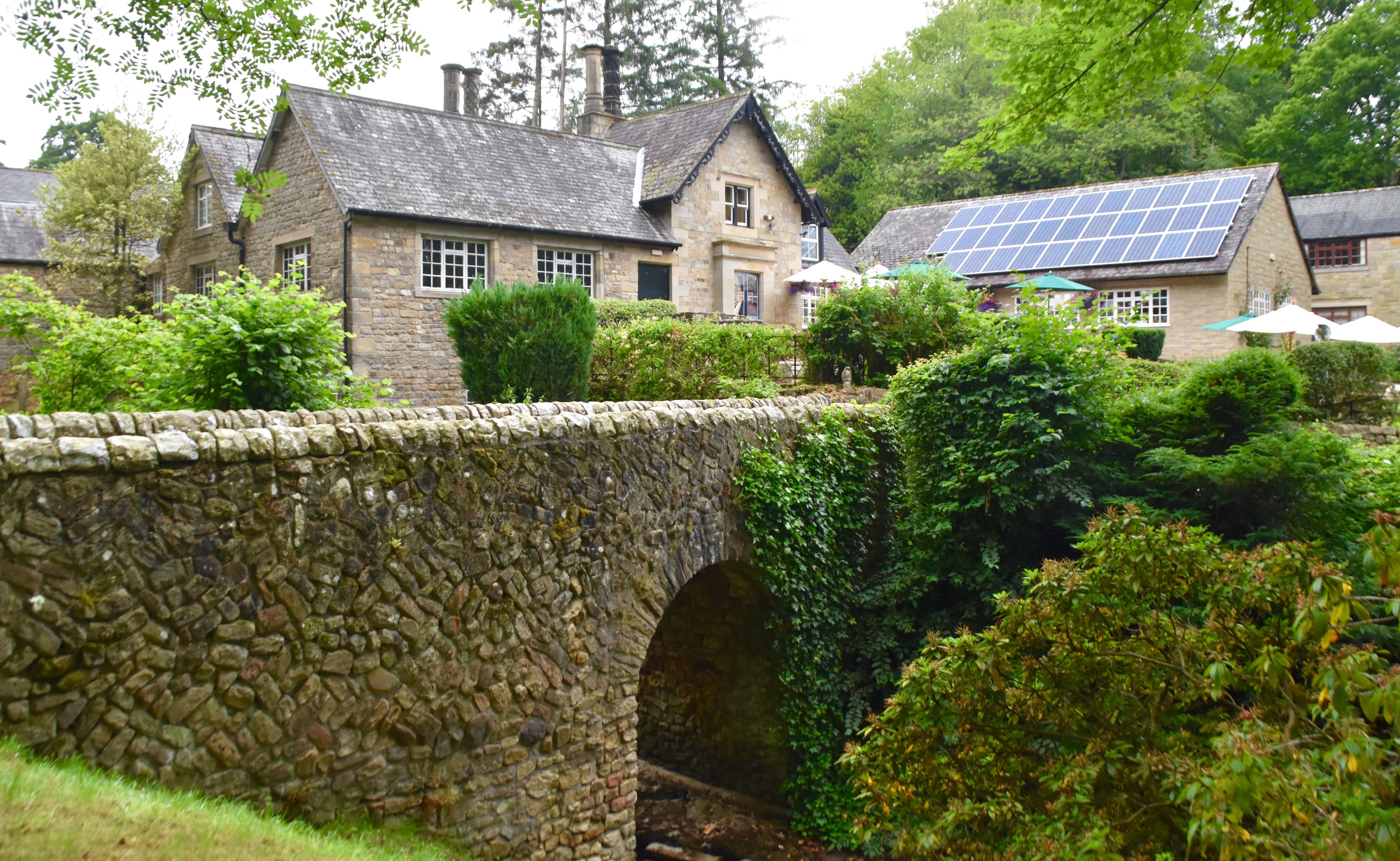
Despite being in an older building the museum is very modern inside and even without the remains of Vindolanda or Hadrian’s Wall would be worth a visit on its own. Here are just a few of the many highlights starting with these javelin tips which were only a few of the thousands of weapons related artifacts from Vindolanda.
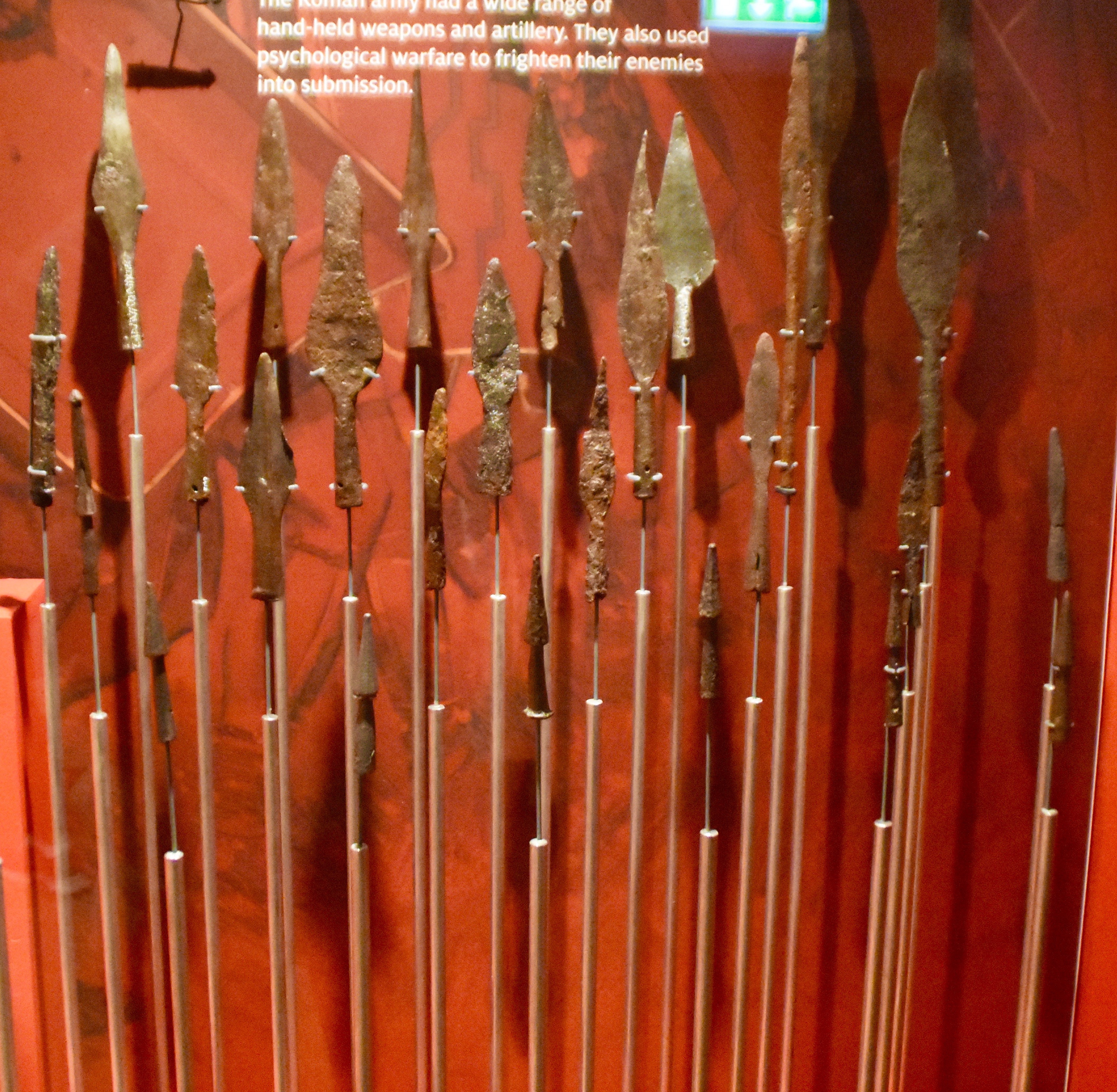
Do you like shoes? Apparently Vindolanda is one of the best places anywhere to dig up Roman shoes as evidenced by this collection. Long before Ferragamo or Gucci were in the footwear design business, other Romans were putting their hand at making shoes for every occasion.
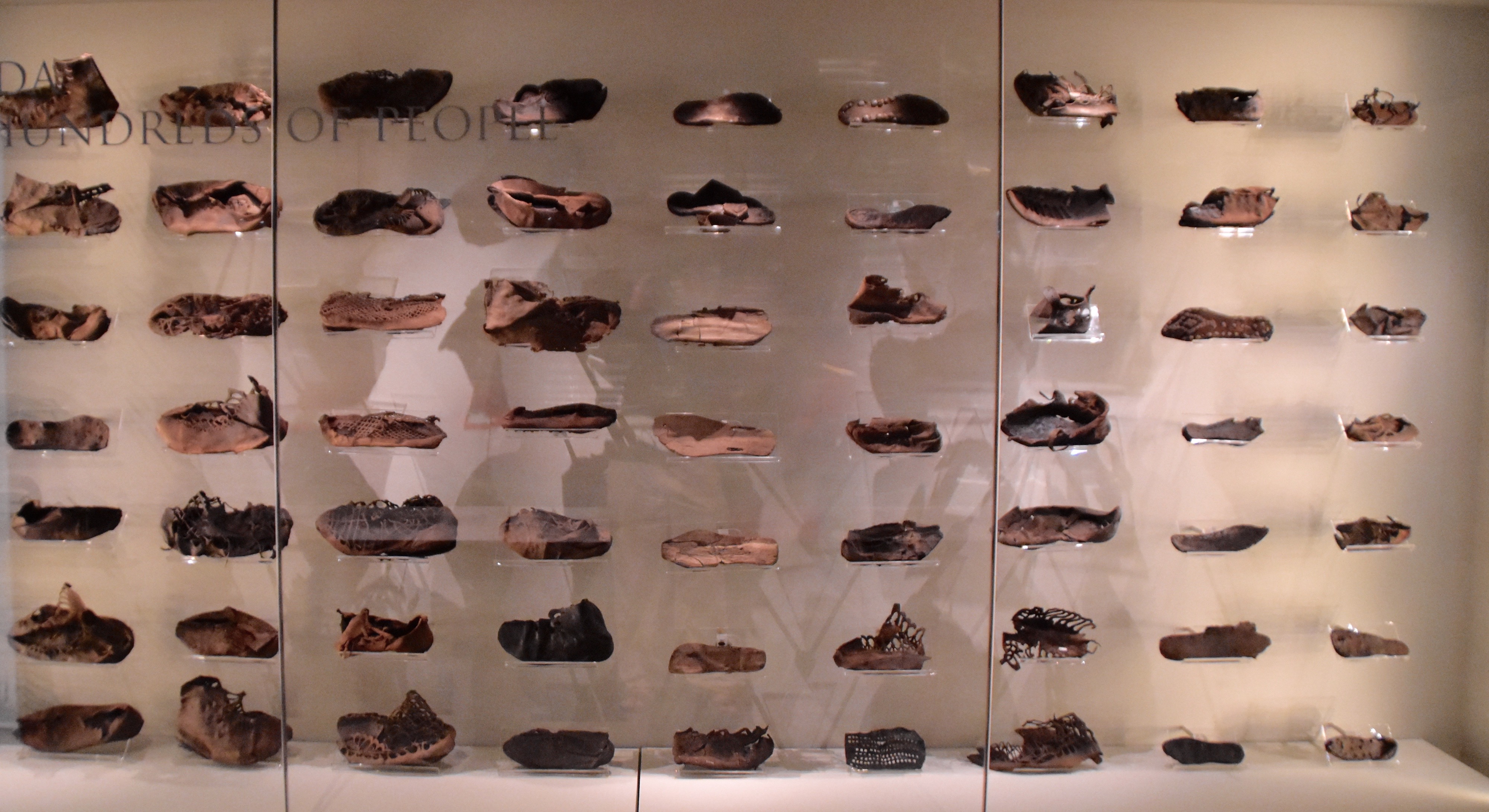
Jewelry too.
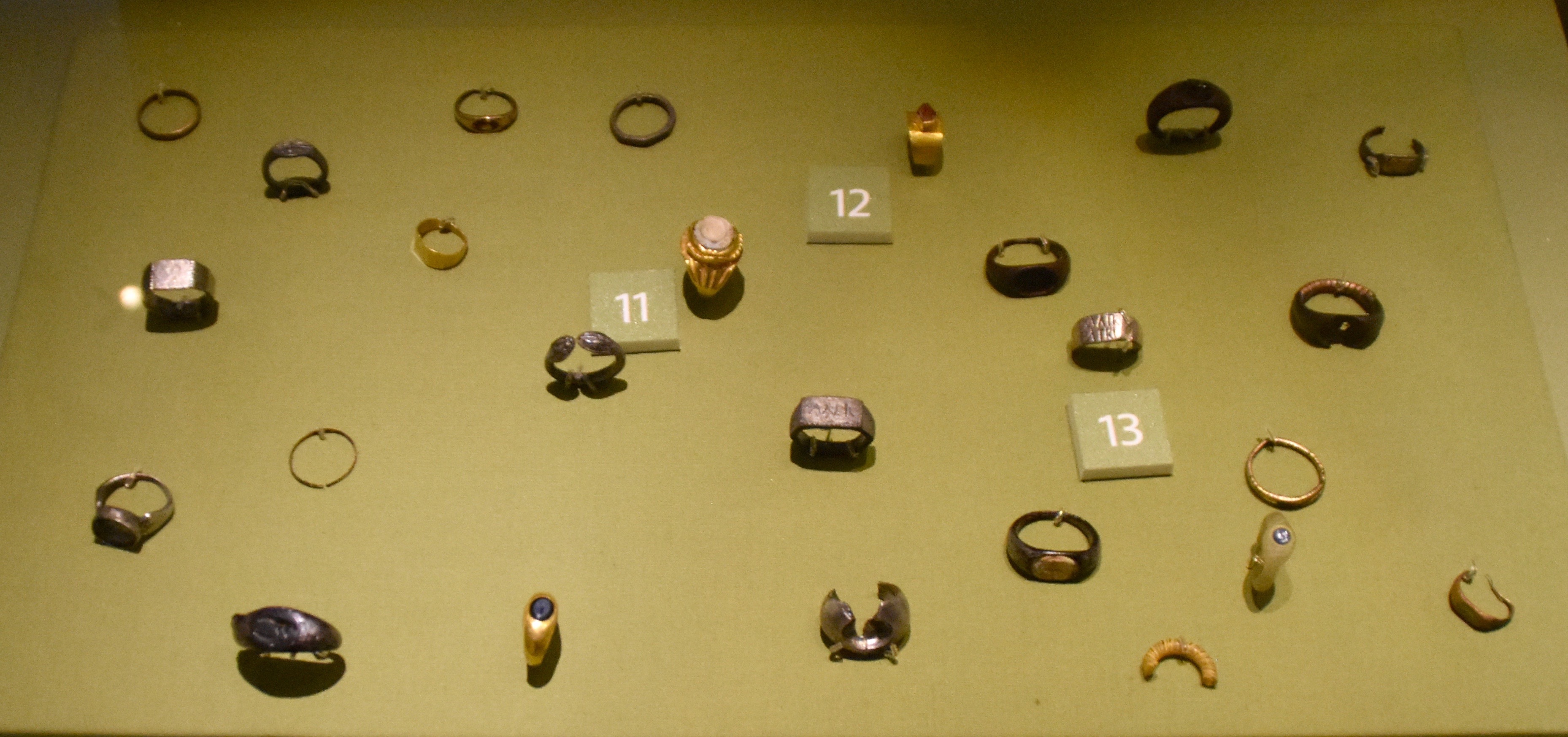
I found this wig made out of moss incredibly well preserved and almost hard to believe that it was almost 2,000 years old.
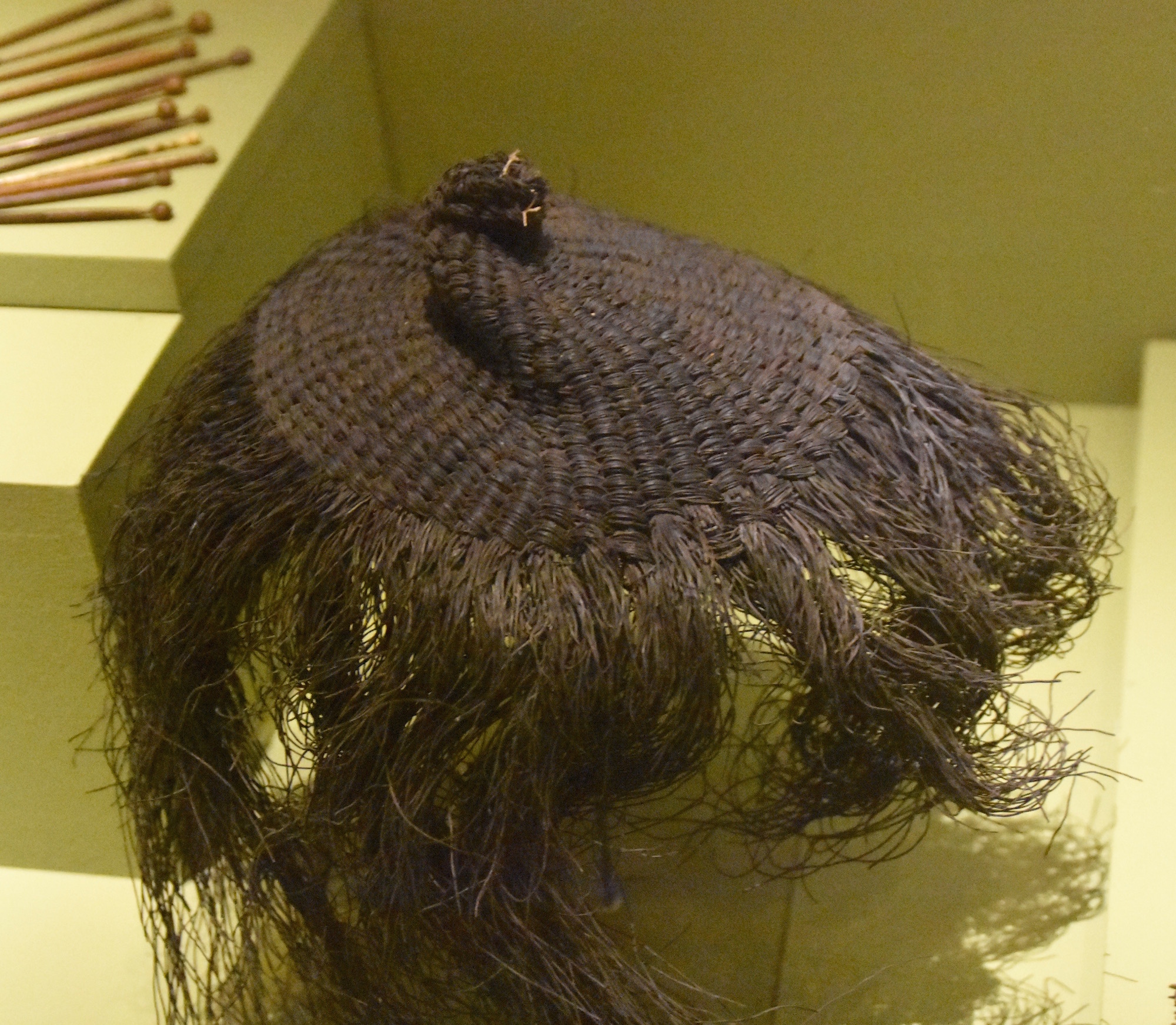
This is a military standard from one of the legion’s stationed at Vindolanda and a very important find in its own right.
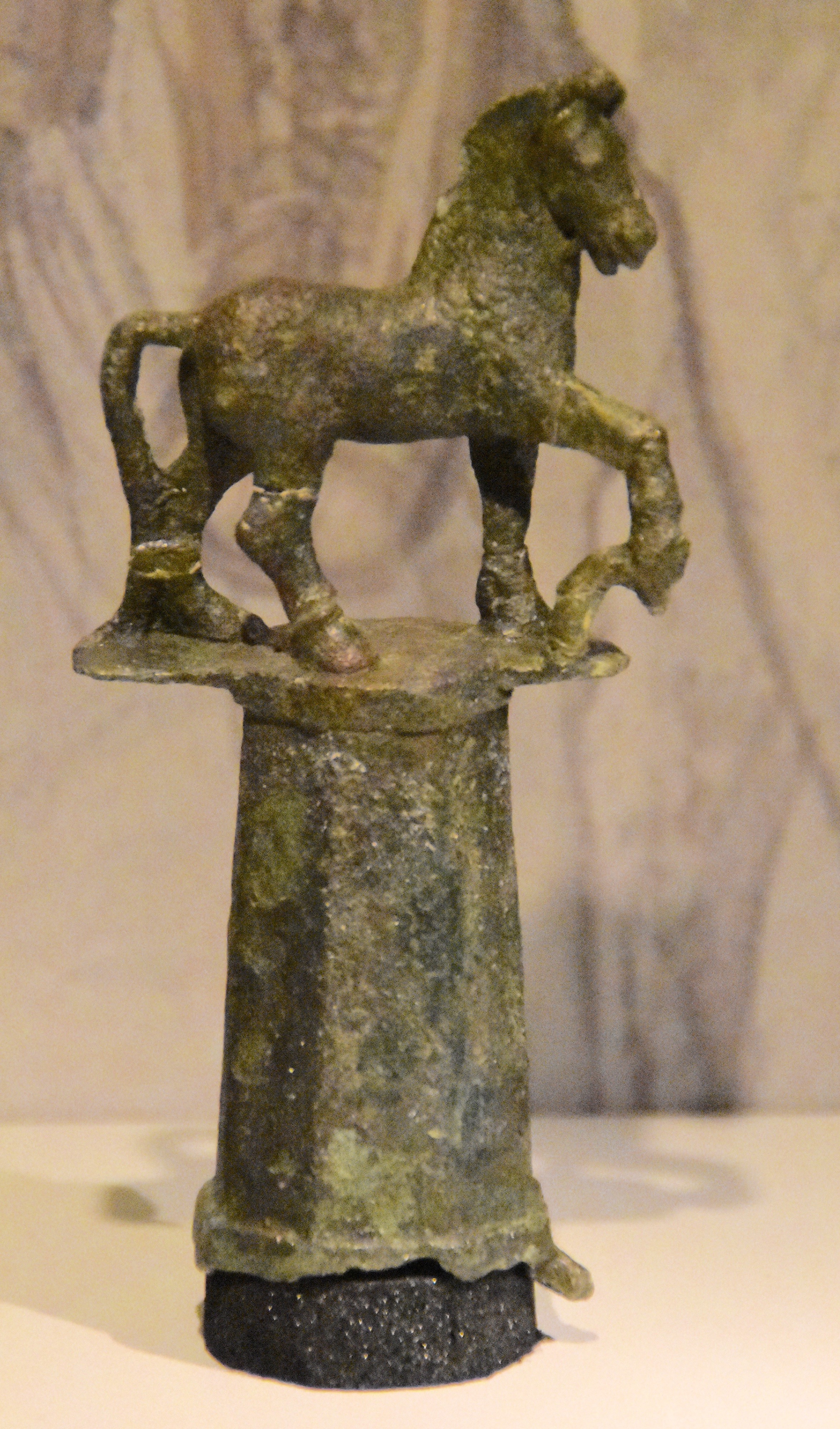
Next up is a pair of boxing gloves, the only ones ever found in Roman Britain and one of the best preserved in existence. You can see from the model that the gloves are much closer to what modern MMA’s wear than the traditional Joe Palooka heavy gloves.
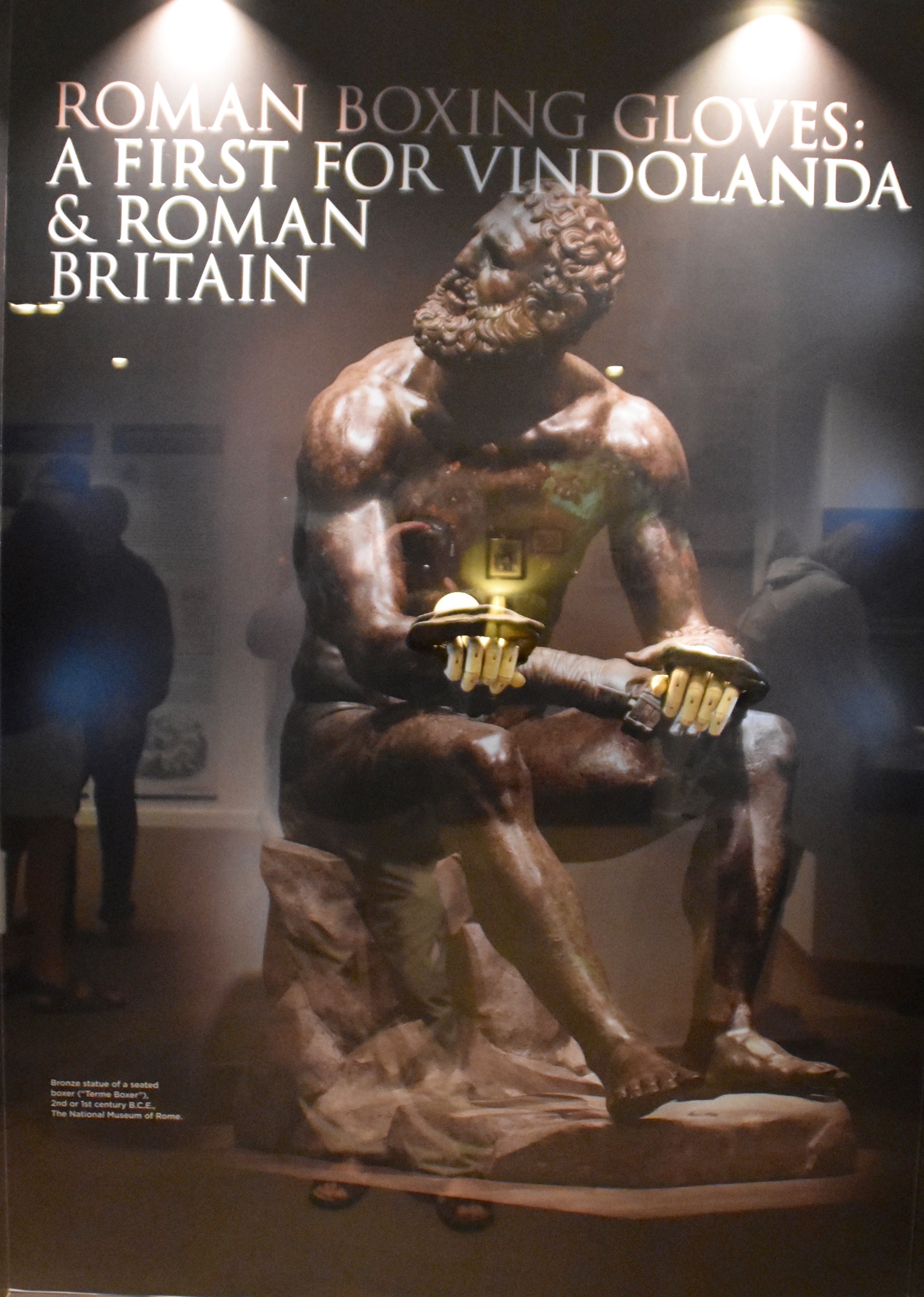
However, by far the most significant finds are Vindolanda are the Roman writing tablets that I fear will be anticlimactic for most people who view them. As Laurel had explained earlier these were the equivalent of postcards or letters to and from home that ended up being discarded or lost after being read. They reveal the daily life and thoughts of actual people from around the Roman Empire. Recently some of them have been returned from the British Museum and are hermetically sealed in a very dimly lit room. Here is what one looks like close up, which I copied from the Vindolanda website.
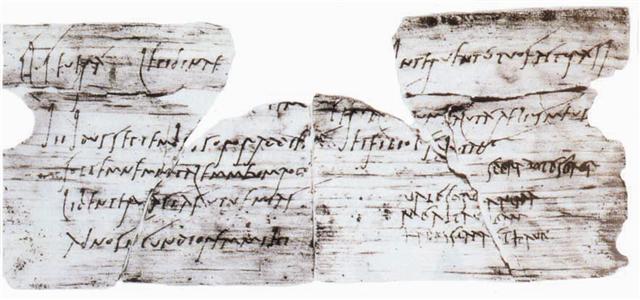
In real life, they are very tiny and one can barely make them out behind the pressure sealed glass so it’s unlikely you’ll be blown away by their historical significance. Still, it’s a bit awe inspiring to know that somehow, through a combination of soil conditions and good fortune, these ultra fragile pieces of the oldest writing in Britain have survived. It’s less inspiring to find out that most of what is written upon them is just as mundane as most modern texts or emails. Human nature has changed very little in the last two millenia and it’s by visiting places like Vindolanda that we can understand that.
Next we are off to the Borderlands and out tour of Scotland begins. Hope you’ll join us.

